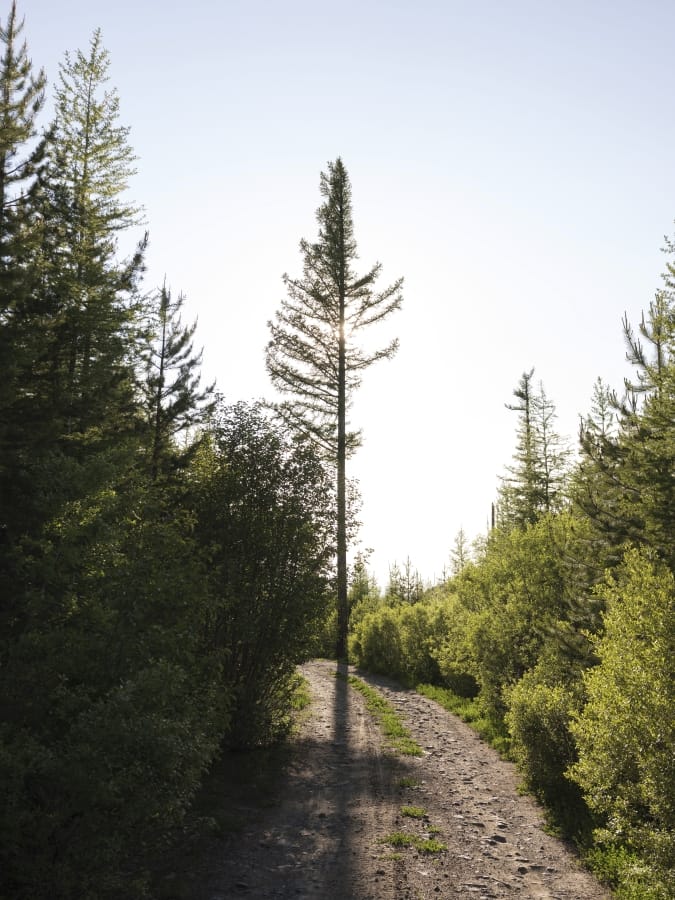Atop a low ridge in the heart of Oregon’s Blue Mountains, Michael McWilliams pushes through brittle branches and scrambles over toppled logs and decay. Bare trunks tower overhead, but the U.S. Forest Service pathologist focuses low. He’s searching for something that lurks underfoot, hidden despite its immense size.
A sickly fir tree is where he finally stops and kneels. He begins raking at its roots with the curved blade of his wood-handled Pulaski. The tool clinks and scrapes, revealing a cream-colored film beneath the bark. It’s an inches-long glimpse of what is likely to be the world’s largest single living organism, a fungus thousands of years old yet still capable of strangling an entire forest.
“Yeah, baby,” McWilliams says, scraping away. “This is a tree killer.”
Dubbed the “Humongous Fungus,” the honey mushroom officially classified as Armillaria ostoyae spreads underground through trees’ root systems. It fruits an edible honey-brown cap just a few weeks each year, typically after the first fall rains. The rest of the year it’s elusive, its presence subterranean.
But what a presence that is: Researchers estimate that the colony here covers 3.7 square miles and may weigh a collective 35,000 tons.
“If you can expand your perception of what a mushroom is,” McWilliams says, “you can see it everywhere.”
Another Forest Service scientist first noticed the widespread die-off of local tree stands in 1988. Greg Whipple linked the problem to armillaria, then worked with others to map samples across hundreds of acres. The teams eventually confirmed that many shared the same DNA.
Whipple, now retired, remembers how his early attempts to limit the damage by clearing out infected areas drew death threats. Timber wars were raging between loggers and environmentalists, upending federal forest management in the Pacific Northwest.
“It was my lesson into politics,” he says.
Decades later, the killer fungus carries on, growing 1-to-3 feet a year. In satellite images of the Malheur National Forest in Eastern Oregon, rusty streaks of dead canopy and the pale, crisscrossed skeletons of downed trees now litter the infestation areas.
Researchers believe part of the colony could date to 6600 B.C. “It’s one of those things that makes you realize mankind is pretty insignificant,” Whipple says. “You realize just how small of a blip we are on the landscape.”
Root disease kills more trees in this region than bugs or beetles, but it moves slowly, picking winners and losers over generations. The fungus remakes the forest as it expands, choking off fir or pine while sparing more tolerant larch. Stunted saplings turn orange as the fungus takes hold. Trees often keel over to reveal roots completely eaten away.
Clouds collect along the ridge as McWilliams scouts out another sample. Rain begins to patter lightly on his hard-hat. With a pocketknife, he pops the bark off a dead fir. He carves out a thick slice of fungus, fattened on destruction, and rubs it between his fingers.
“It loves this area,” he says. “It has everything it needs.”



